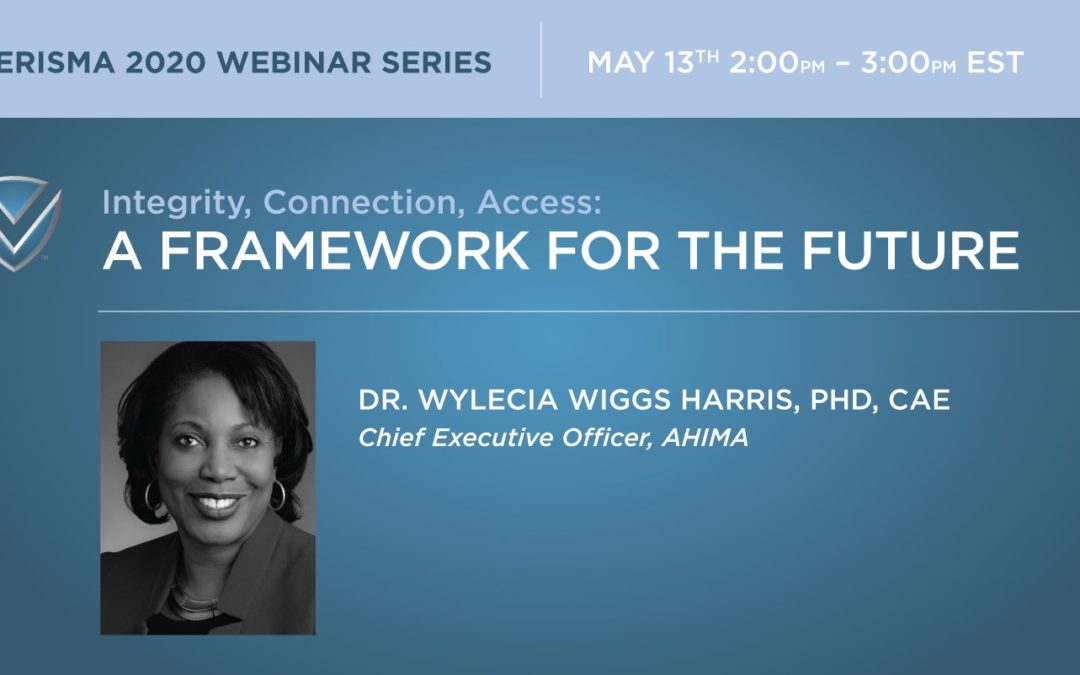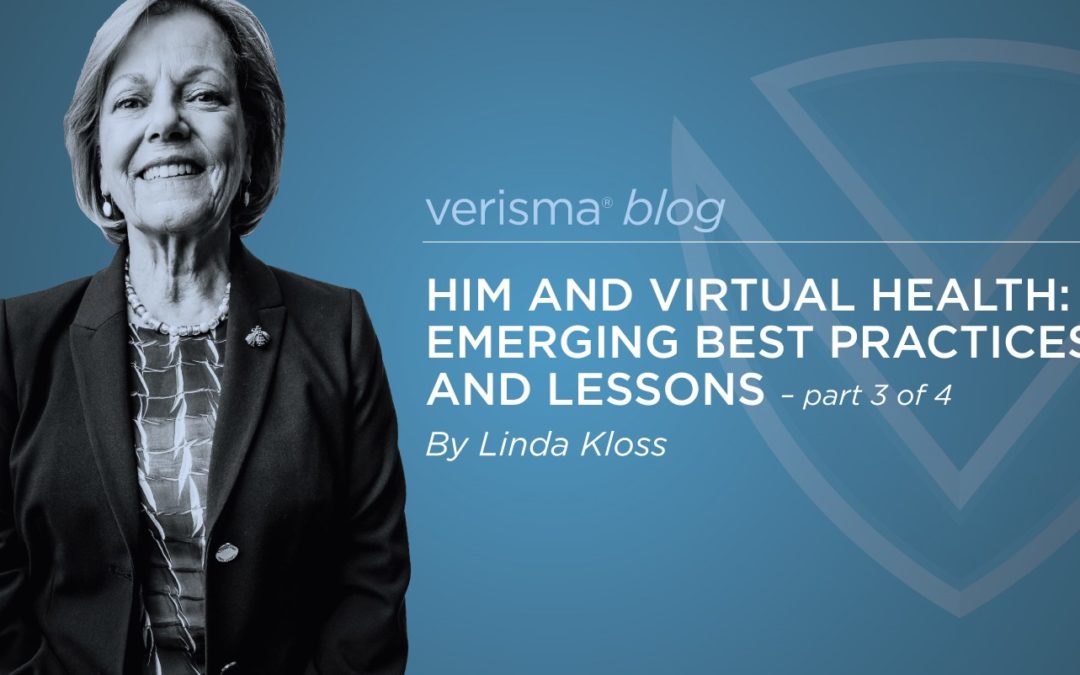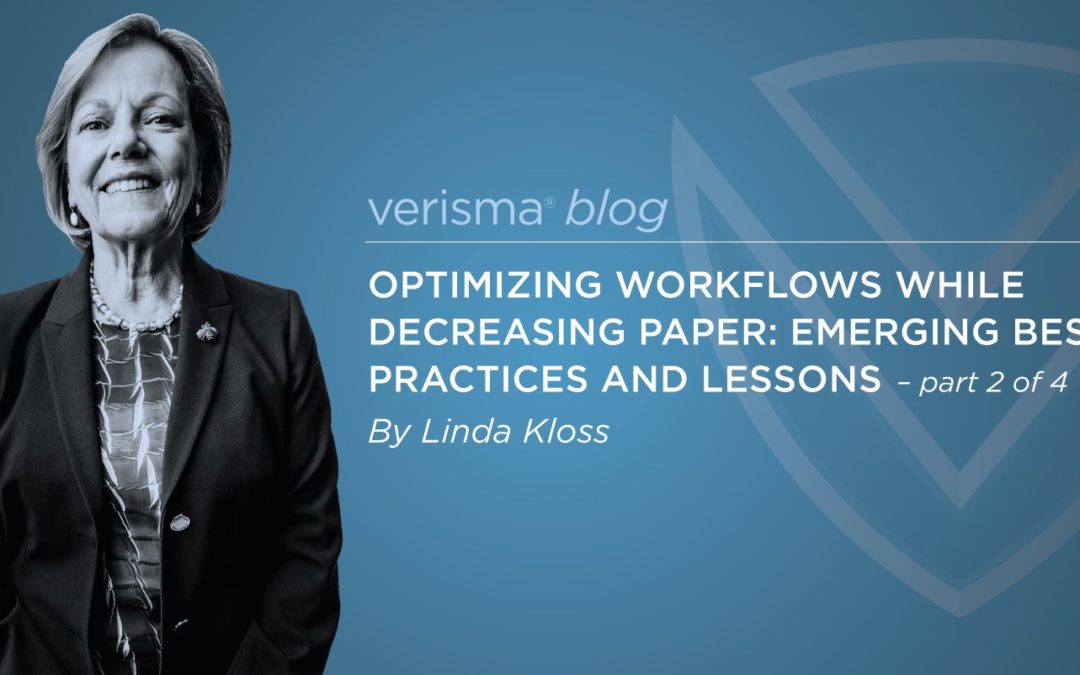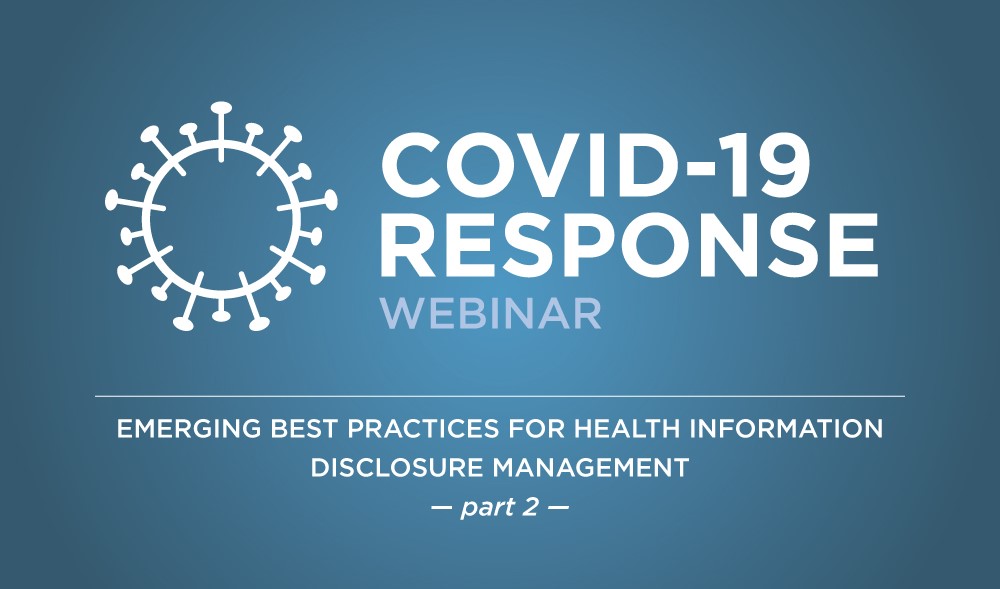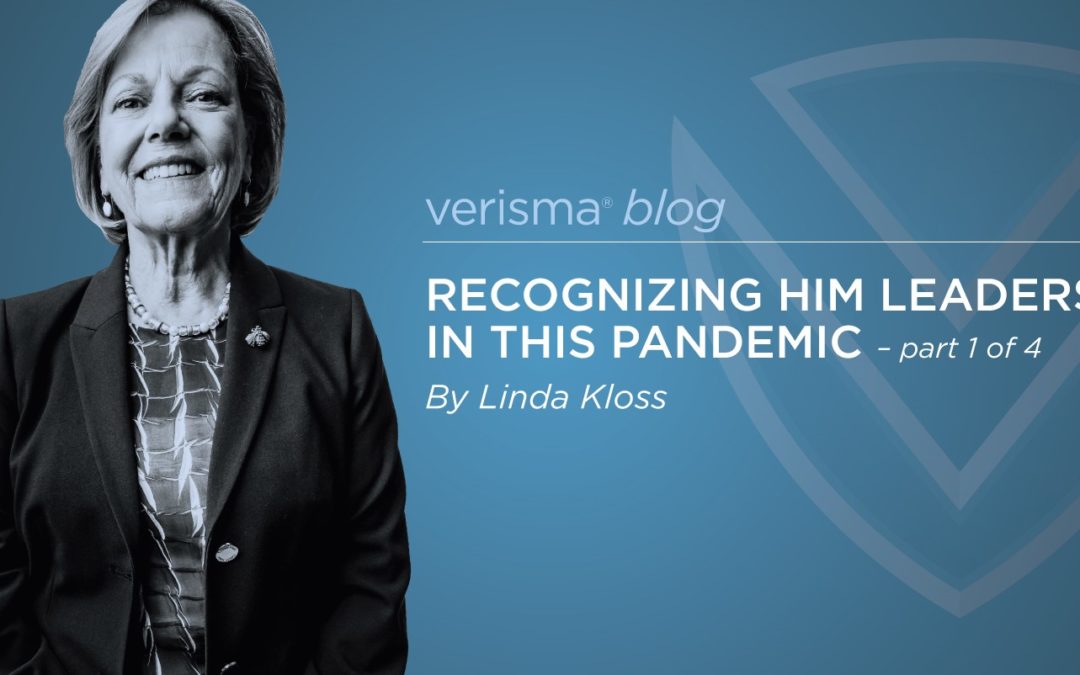By Linda Kloss
This is the second blog highlighting lessons learned by HIM leaders at health systems in New York, New Jersey, Boston, Delaware, and North Carolina in the midst of responding to patients ill with the COVID-19 virus. Once again, I want to thank these leaders for agreeing to be interviewed to share their experiences in the midst of this chaotic and frightening professional and social experience.
Their experiences pointed to 8 emerging best practices based on these leaders first several weeks of COVID-19 response efforts. We label them emerging because they describe adaptive, not static changes. Adjustments will continue to be made as disaster–and recovery–response circumstances evolve. The best practices comprise three key initiatives:
- physical distancing – staff and patients
- optimizing electronic workflows, and
- adapting policies to remove barriers
The first blog described two best practices for protecting staff through work at home and by changing the on-site environment. Today, we share two more important best practices directly relating to release of information practices.
Best practice #3: Close in-person R-O-I request services turned out to be easier than expected. First, health systems were limiting all public traffic in and out of buildings. Interviewees uniformly reported that in-person requests dropped off abruptly simply because traffic was so diminished. Second, routine and elective referrals were delayed, physician practices closed and this further depressed the volume of routine requests. In closing in-person services, interviewees advised careful attention to posting clear instructions, updating signage, web pages, and automated messaging systems.
Protected health information may be requested in five ways : 1) by completing request/authorizations at an in-person service window, 2) accessing a request/authorization on the health system website and submitting it via mail, 3) accessing a form on the health system website, scanning and e-mailing it, 4) processing verbal requests, and 5) using a request App.
Five routes have rapidly become four. Routes 2, 3 involve handling and processing residual paper and these routes represent the biggest barriers to work from home. Verbal requests, route 4 may be tolerable alternative in a public health emergency, but shouldn’t become a new routine. It is labor intensive, does not permit rigorous authentication, and can’t easily be audited.
The need to optimize electronic workflows is thus the key initiative and a key lesson from health systems on the front line. Thus, another best practice is to Use R-O-I workflow technology and the Verisma Request App. Workflow technology and request apps eliminate paper, permit rigorous authentication, and create records of requests and their fulfillment.
One of the health systems interviewed had fully implemented the Verisma Request App (VRA) and integrated it with its patient portal 18 months ago. For this large health system at the epicenter of the pandemic, minimal adjustments were needed in request procedures. The HIM leader noted that the VRA provided “peace of mind” because the request, authentication and release processes were fully automated. Another interviewee was planning to implement VRA to eliminate in-person requests for security reasons. This health system accelerated implementation, delaying full portal integration, but getting the App in place to ensure an electronic route.
In addition to using request apps, other workflow best practices involve redirecting whatever work you can to your R-O-I vendor. Because health system staff and the vendor staff use the Verisma Release Management (VRM) workflow platform, work distribution can keep pace with changing demands. Health systems that have centralized R-O-I across facilities and practices using VRM are in the best position to respond to the rapid changes in workflow required for these vexing times. One health system that was in process of centralizing R-O-I from hundreds of physician practices at the outset of the crisis. Their current challenges are with the practices that have yet to be centralized and are now closed, with unprocessed requests buried in incoming mail and virtually irretrievable. This health system also implemented a call center operated by Verisma, so all requests are processed uniformly and seamlessly.
In August of 2005, Hurricane Katrina hit the gulf coast and New Orleans leaving millions of people displaced and caregivers without any trustworthy information about their health conditions and medications. We all remember the photos of people with their pill bottles in paper bags. We remember photos of wet piles of records, detritus of the flood. Only the Veteran’s Administration hospitals could easily access electronic medical and medication records when people relocated. COVID-19 and the lessons being learned will irrevocably change health information access and disclosure. It is already clear from the experiences of the HIM leaders interviewed that automated ROI systems, including the request application, is providing R-O-I business continuity and security flexibility.
Next week we will feature lessons learned about the importance of HIM engagement with portal and telemedicine workflows and policies. Our continued wishes for your safety and health in this very sad time. Please jump in and share your experiences and questions, request an archive of the April 1 Webinar by e-mailing Davy Simanivanh (dsimanivanh@verisma.com) and plan to join us on April 29 for a follow-up webinar.
